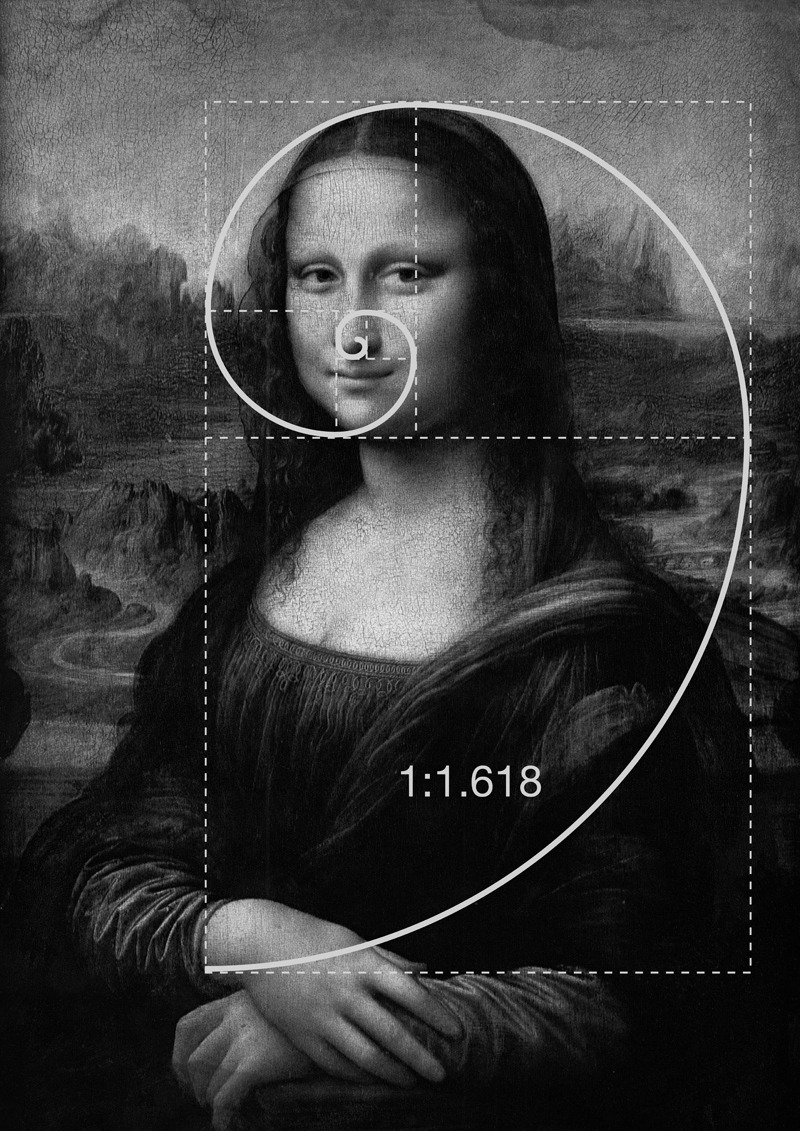"Mona Lisa and Golden Ratio"
Source: Chaosophia218
Mona Lisa (also known as La Gioconda or La Joconde) is a 16th
century portrait painted in oil on a poplar panel by Leonardo da Vinci
during the Italian Renaissance. The work is owned by the Government of
France and is on the wall in the Louvre in Paris. It is perhaps the most
famous and iconic painting in the world.
Prevalent in the major works of Leonardo Da Vinci and underlying many of his design compositions, is the Phi relationship (also known as the Golden Ratio or the Golden Mean), a Ratio of approximately 1:1.618, found in Nature and Creation, and inherent in the Fibonacci sequence. The Golden Rectangle, the Golden Triangle, and the Golden Pyramid, all based on the Golden Ratio are all appear prominent in the work of Leonardo Da Vinci. He referred to the Golden Ratio as the “Divine Proportion.”
Also, certain Solar System orbital periods and relative planetary distances are also related to Phi. Some scientists say that the shape of the Universe itself is a Dodecahedron based on Phi.
Prevalent in the major works of Leonardo Da Vinci and underlying many of his design compositions, is the Phi relationship (also known as the Golden Ratio or the Golden Mean), a Ratio of approximately 1:1.618, found in Nature and Creation, and inherent in the Fibonacci sequence. The Golden Rectangle, the Golden Triangle, and the Golden Pyramid, all based on the Golden Ratio are all appear prominent in the work of Leonardo Da Vinci. He referred to the Golden Ratio as the “Divine Proportion.”
Also, certain Solar System orbital periods and relative planetary distances are also related to Phi. Some scientists say that the shape of the Universe itself is a Dodecahedron based on Phi.

No comments:
Post a Comment